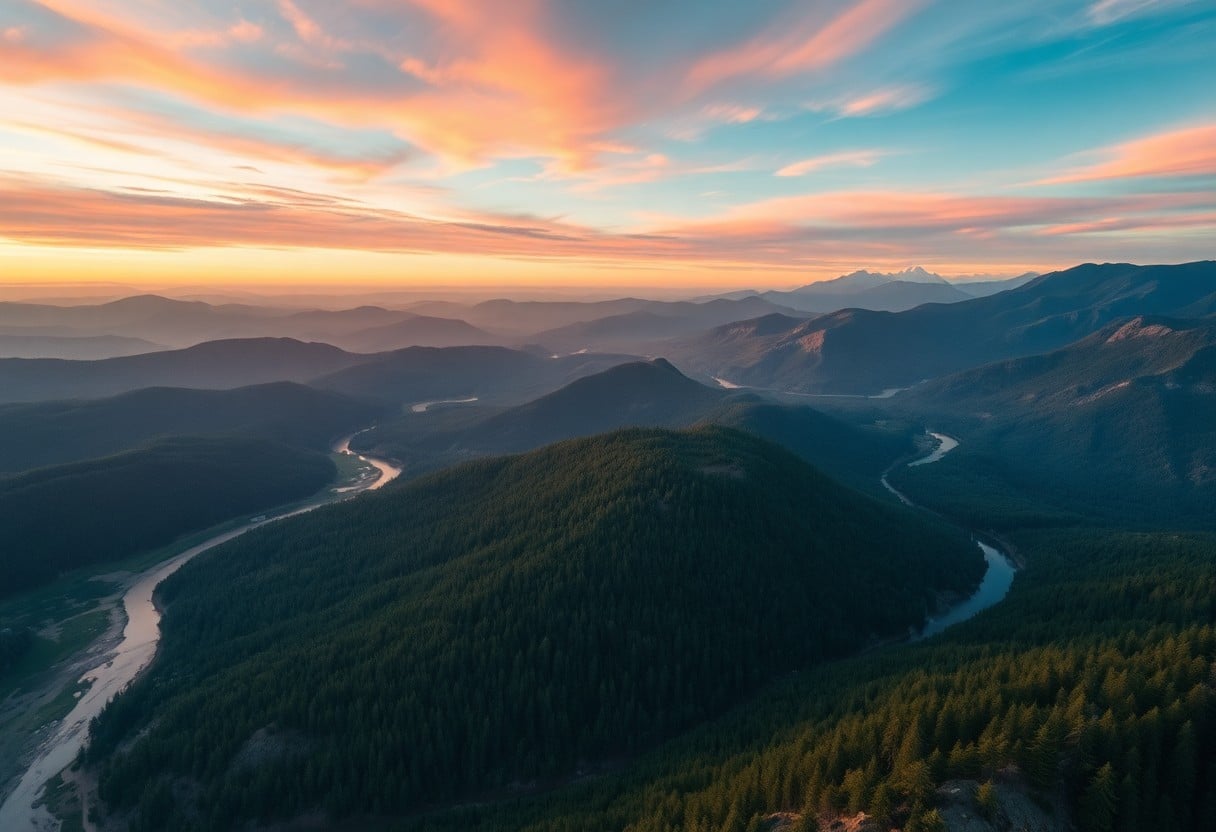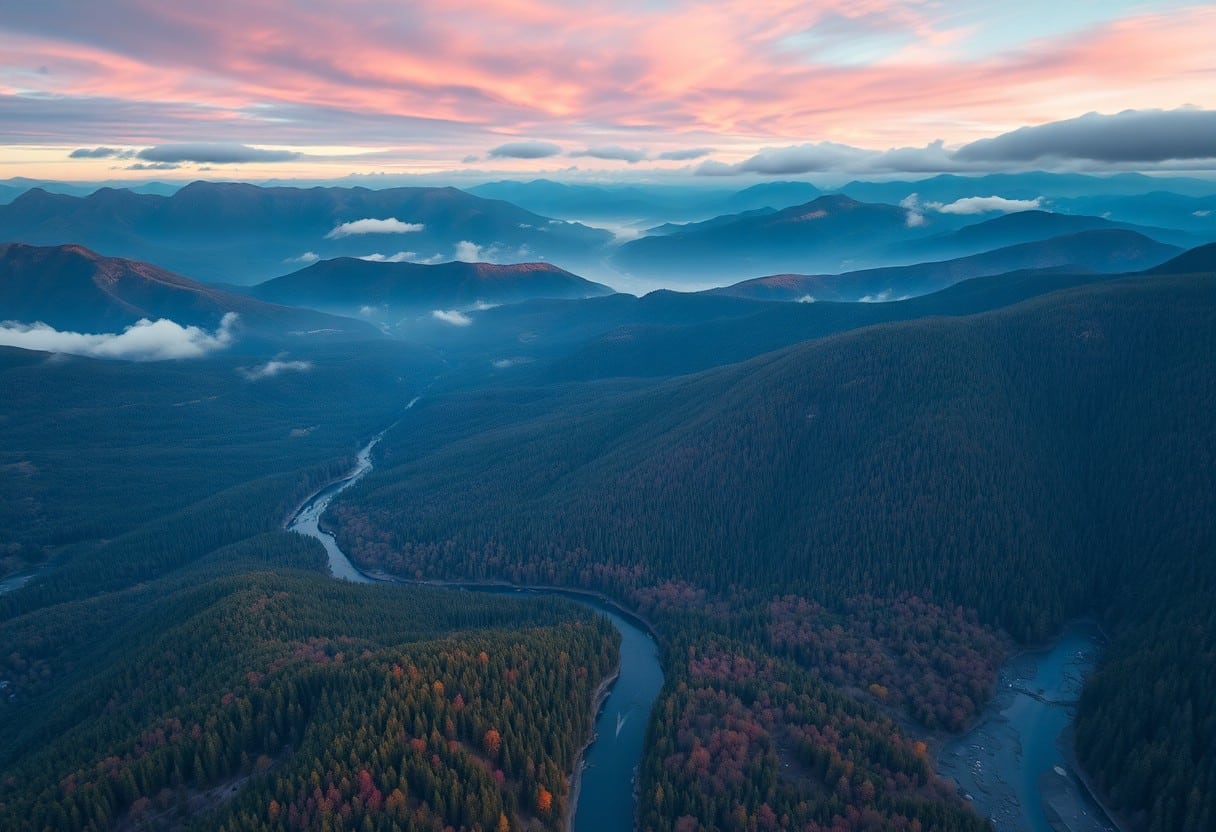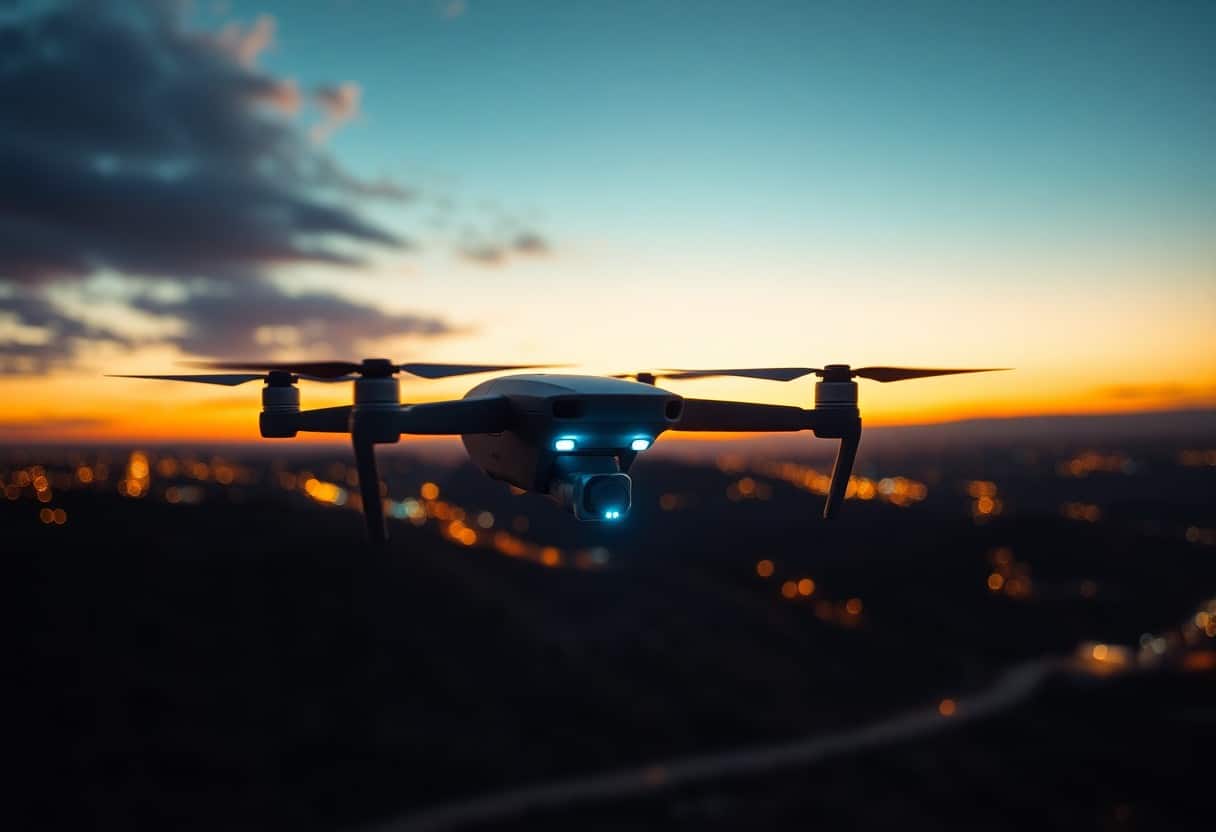10 Powerful Steps to Enhance Your Drone Photography
In this article, you will learn aboutTen Powerful Stepsto improve your drone photography skills. Whether you're a beginner or an experienced photographer, theseUseful Tipswill help you capture even more stunning images. Mastering the right techniques will not only improve the quality of your work, but will also ensure that theSafety FlightThe newest version of the camera will allow you to explore the infinite possibilities of drone photography with greater confidence in your creations.
Key Points:
- Choosing the right equipment: Choose a high-quality drone to ensure the effectiveness of your photography.
- Mastery of basic photography knowledge: Understand composition, lighting and camera settings to enhance your photography skills.
- Planned flight paths: Plan your shooting route in advance to get the best viewpoints and images.
- Make good use of natural light: Choose to shoot during the golden hour (dawn and dusk) to take advantage of the soft light effect.
- Experiment with different angles: Experiment with different shooting heights and angles to create unique visual effects.
- Post-production Editing Tips: Use editing software to optimize your photos and improve the overall quality.
- Maintaining safety and compliance: Ensure that you are operating the drone within legal limits and are aware of your surroundings.

Know Your Equipment
Owning a drone doesn't mean you can automatically take great photos. Understanding your equipment is the first step in improving your drone photography skills. You need to have a thorough understanding of your drone's capabilities, features, and available photography options. With proper maintenance and preparation, you can ensure that your equipment is functioning properly when you shoot, which can help you capture better images.
Understanding your drone setup
Each drone has different settings and features, and familiarizing yourself with these will help you realize the full potential of your drone. Check your camera settings, including ISO, shutter speed and aperture, to make sure they are adjusted for the current environment. The right settings will improve your chances of taking great images.
Practice Manual Controls
Manual control is one of the most important skills in drone photography. Although automatic mode is convenient, learning how to use manual control will give you more flexibility and creativity when taking pictures. Mastering how the manual mode works allows you to more accurately control the lens angle and shooting parameters, which is especially important when shooting motion pictures.
When practicing manual controls, you should focus on the drone's control response and camera settings. Regular practice allows you to hone your skillsand learn how to make quick adjustments in different environments. Over time, you'll become more comfortable in a variety of shooting situations.The best way to get a better quality image is to practice in a safe space. Remembering to practice in a safe space will help you avoid accidents and boost your confidence.
Planning your shoot
Prior to the drone photographyPlanning your shootIt's important. Considering the subject, location and angle of the shot can help you capture the perfect image. Use resources such asBasic Steps - How to Start Drone Mapping and Aerial 3D ReconstructionGet inspiration and practical advice on how to improve your work.
Prior survey sites
Before the shoot.Prior survey sitesIt can be much more efficient. Use maps or apps to find the best location, know your surroundings, and make sure you don't run into obstacles or unwanted interference to ensure safe and effective filming.
Consider the time of day
When shooting, you'll need toConsider the time of day. Soft light in the morning and dusk enhances the texture and color of your photos. Strong sunlight during highlights can cause shadows and overexposure, which can detract from the picture. Therefore, plan to shoot at the optimal time of day to make your work more striking and to reveal subtle details.
Using Gridlines
When capturing a great picture, use theGridlinesIt allows you to better organize your images. By enabling the gridline feature in your camera or photo application, you can divide your image into nine-panel grids, which helps you keep track of where important elements are located and ensures a more visually appealing photo.
Follow the rule of thirds
comply withthe rule of thirdsIt is an effective technique to enhance the composition. Dividing your image into three equal parts and focusing on important subjects at the intersection will make your photo more balanced and compelling.
Creating a balanced composition
To give your work a more professional look, learn toCreating a balanced compositionYou can make sure that all parts of the picture blend harmoniously by adjusting the position of the subject, using symmetry, or utilizing natural elements. You can enhance the viewing experience by adjusting the position of the subject, using symmetry, or utilizing natural elements to ensure that the various parts of the screen blend harmoniously.
Consider visual comfort for the viewer as you balance the composition. Use symmetrical and complementary elements to guide the eye and avoid strong horizontal or vertical shifts. These techniques canEnhance the overall aestheticsand make the viewer's eyes flow naturally, making your photos more appealing.

Try a different angle
In aerial photography, the more you explore different angles, the more you can create unexpected works. Don't Be Afraid to Adjust Your Drone's Altitude and OrientationThis way you can capture different landscapes and atmospheres. By experimenting in this way, you will be able to discover many unique effects that will not only improve your photography skills, but also enhance the visual impact of your work. For more professional advice, please refer toMastering Drone Controls - 7 Steps to Improve Flying SkillsThe
Capturing unique perspectives
Capturing unique perspectives can make your photography more appealing. When photographing, you can try to focus on different details of common landscapes and discover beauty that is usually overlooked.
Shooting from high and low angles
Combining high-angle and low-angle shots allows you to switch the focus and breathe new life into your work. High-angle shots usually show a wider panorama, allowing the viewer to see their surroundings more clearly, while low-angle shots emphasize the contrast in the foreground, making the subject stand out more. These changes not only add depth to the pictureIt also attracts the eye of the viewer. With this technique, you can be more creative with the same combination and make your work stand out.
Consideration of light conditions
Lighting conditions are a key factor that you must seriously consider when taking drone photography. Good lighting can significantly improve the quality of your photos, producing vivid colors and details. We suggest you readUnleash Creativity - 10 Essential Steps to Mastering 3D Modeling SoftwareIn addition, you will learn how to effectively utilize the light.
Shooting in the Golden Hour
Golden hour is the best time for photography, usually after sunrise and before sunset. During this time, the natural light is soft enough to create stunning colors and deep shadows, giving your drone photography a more artistic feel.
Avoid strong midday sunlight
Intense midday sunlight can cause a lot of damage.Too many comparisonsrespond in singingHarsh ShadowsThis makes your photos unusable. This light can cause loss of detail, especially in the highlights, and affect the overall aesthetics of the image. By choosing to shoot in softer light, you can achieve better results and avoid the undesirable photos caused by direct sunlight.
Strong midday sunlight not only robs your images of detail, it also makes you feel anxious because it makes shooting more difficult. When the light is too strong, it is recommended that you switch to shooting in softer light periods, which will dramatically improve the quality of your photos and make your photography more compelling.
Effective use of filters
In drone photography, filters can dramatically improve the quality of your photos. Proper use of filters can improve color saturation, reduce reflections, and help control light to achieve the desired results. It is highly recommended that you familiarize yourself with different types of filters and choose the most appropriate one according to your shooting environment and needs to enhance your creative freedom.
Polarized lenses to reduce reflections
The use of polarized lenses can be effective in reducing the water or other smooth surfacereflex (i.e. automatic reaction of organism)The polarizer is designed to make your photos clearer and more saturated in color. When you're photographing water or glass, rotating the polarizer adjusts the effect so that the details in the image stand out and make it easier for the viewer to be captivated.
ND Filter Control Motion Blur
An ND filter is a tool that effectively controls the amount of light coming into the camera, allowing you toStrong light environmentYou can also take pictures at slower shutter speeds. This creates a beautiful motion blur effect that enhances the visual impact of photos of moving objects or natural scenes. Whether it's the effect of flowing water or flying birds, the ND Filter can be used to combine static and motion.
Practicing aviation skills
In the course of your enhancement of drone photography, thePracticing aviation skillsIt's an indispensable step. Mastering your flying skills will not only help you capture better images, but also meet challenges in different environments. With regular practice, you'll familiarize yourself with the controls of the drone, resulting in more professional photography.
Mastering Smooth Flight
Smooth flight for Taking High Quality Images It's important. You need to practice a steady flight path, avoiding sudden movements and vibrations, which will significantly improve the quality of your images. During practice, watch how the drone reacts and adjust your maneuvers to make the flight more natural.
Try Dynamic Motion
Dynamic motion adds energy and appeal to your photography. With different angles and movement patterns, you can capture images like never before. Whether it's sliding, spinning, or lifting, these movements can make your work more engaging. However, be careful when performingQuick MotionKeep the drone stabilized and away from any obstacles to avoid accidents.
While trying out the dynamic motion, you can explore various techniques such asLateral GlideYou can also use the camera's ability to move quickly up or down the screen, and to rotate around a focal point. These techniques not only create stunning images, but also help you tell a better story. But always be aware of your environment, make sure your drone can perform these maneuvers safely, stay focused to avoid accidents, and have fun creating.
Edit your photos
After taking the drone photos.Editing is a critical stepThe post-processing process can enhance the quality of your work. With post-processing, you can correct exposure, adjust colors, and even enhance the overall effect of your photos to make them more appealing. Use the right editing software to make sure you can realize the full potential of each photo.
Enhanced color and contrast
During the editing process, theEnhancing color and contrast can bring a picture to life.By increasing color saturation and adjusting contrast, your photos will become more striking. By increasing color saturation and adjusting contrast, your photos will become more striking, allowing the viewer to feel the mood and emotion of the moment.
Crop for better composition
Tailoring can help youImprove the composition of your photosInstead of removing unnecessary elements, the focus is on the subject matter. This guides the viewer's eye and gives the overall effect a greater impact.
By cutting.You can effectively emphasize the themeIf you want to change the composition of the screen to make it more balanced, you can use the "one-third rule" to crop the screen. Consider using the "Rule of Thirds" to crop, placing the main elements at the intersections of the frame, which will make the image more appealing to the eye. Cropping is not just about removing edges, but also about exploring different perspectives to bring your work to life.

Sharing and Learning
On a journey of drone photography.share (joys, benefits, privileges etc) with othersYour work and experience not only enhances the learning of others, but also contributes to your personal growth. Being actively involved in communities and events allows you to exchange knowledge and skills with like-minded people and tap into more creative inspiration.
Join the photography community
ThroughJoin the photography communityYou will be able to expand your horizons and meet a wide variety of photography enthusiasts. These communities not only provide valuable resources and inspiration, but also allow you to meet a lot of great peers, share each other's photography experience, encourage each other and learn from each other.
Seeking feedback on your work
ask for sth.Seeking feedback on your workGetting different perspectives and advice is especially important for improving your skills. Don't be afraid of weaknesses or suggestions for improvement - they are important opportunities for you to improve.
Send a copy of your work to a friend or experienced photographer.Seriously listen to their suggestionsWhether it's about composition, color manipulation or technical application, their feedback can help you see things you haven't noticed and encourage you to try new techniques. Their feedback can help you see things you haven't noticed and encourage you to try new techniques. Continuing to seek feedback will have a profound effect on your photographic skills.
10 Powerful Steps to Improve Your Drone Photography
By mastering these 10 powerful steps, you'll be able to dramatically improve your drone photography skills. From choosing the right time of day, to learning creative composition and stabilization, these techniques will help you capture amazing images. By practicing and exploring different camera angles, you'll develop a unique style that will make your work stand out from the crowd. Remember to keep an open mind and be ready to learn new techniques that will open up endless possibilities for your photographic journey.
Frequently Asked Questions
Q: How do I choose the right drone for my shoot?
A: When choosing a suitable drone for photography, consider camera resolution, stability, flight time and maneuverability. Look for a drone with a high-definition camera and make sure it has a stable flight system to minimize blurring and shaking.
Q: Do I need to use filters when taking pictures?
A: Yes, using filters can help control light and reflections, especially in bright light situations. nd filters can reduce the amount of light coming in, allowing you to shoot at slower shutter speeds and create softer images.
Q: How do I make sure I get the best camera angle from my drone?
A: Plan your flight path taking into account different altitudes and tilt angles. Using the Waypoint Flight Mode will help you get a precise camera angle for more attractive photos.
Q: What tips can I use to improve the quality of my drone photos?
A: In addition to choosing high-resolution and high-quality lenses, make sure you use high contrast and low ISO settings to minimize noise when taking pictures. Use manual mode to adjust shutter speed and aperture for optimal exposure.
Q: How do I post-process my drone photos?
A: Use image editing software, such as Photoshop or Lightroom, to make adjustments. You can adjust contrast, brightness, color saturation, and crop to enhance the overall visual effect of your photo.
Q: What styles of photography are suitable for drone photography?
A: Common styles of drone photography include natural landscape photography, city skyline, event and wedding photography. Drones can capture spectacular panoramas, showing images that people can't see from the ground.
Q: What are the rules for safe drone flight during filming?
A: Each country and region has its own flight regulations, which usually include flying within designated areas, observing altitude restrictions, not obstructing air traffic, and avoiding flying over crowds. It is important to check local laws and regulations and follow them before using your airplane.




